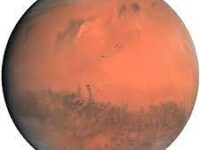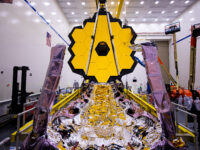Painted in his chariot ascending towards the light, the Greek god Apollo has long been known to represent archery, prophecy, and above all else, the sun. His twin, Artemis, is most famously the goddess of the hunt, nature, and the moon. Greek mythology follows us wherever we roam, from the constellations over our heads to NASA’s exploration projects, commonly named after figures and symbols in ancient lore. Nearly 50 years have passed since Apollo 11 landed three American astronauts on the moon, putting an end to the space race. Next to enter the scene after her brother: Project Artemis.
In 2018, NASA published its plans to fly astronauts to the moon once again, specifically to its south pole. Whereas Apollo was a 17-part mission, Artemis’ plan currently consists of merely three launches. The first launch, Artemis I, will be an uncrewed mission to test systems and is scheduled for launch in November of this year. Artemis II, in 2024, will solidify navigation and crew communication and explore farther than humans have ever gone before, into deep space. Artemis III, also scheduled for 2024, will integrate the data collected during the first two launches and bring the first woman and the next man, one of whom will likely be a person of color, onto lunar soil.
Artemis III, also scheduled for 2024, will integrate the data collected during the first two launches and bring the first woman and the next man, one of whom will likely be a person of color, onto lunar soil.
There are four major systems to the Artemis missions: Orion, Gateway, Human Landing System (HLS), and Space Launch System (SLS). The Orion spacecraft, bearing the namesake of Artemis’ fellow hunter, will carry the astronauts from the Kennedy Space Center in Florida to the Gateway Space Station orbiting the moon. The astronauts will then board the HLS to reach the moon, modeling how the ideal mission to Mars would unfurl. The final piece, tying all previous elements together, is the SLS. Standing at approximately 322 feet, it is currently the most powerful rocket in the world and will launch Orion, the astronauts, and all cargo to the moon at a speed of 24,500 mph.
Space exploration sparks nationwide optimism and worldwide scientific inquiry, but what creates the need to travel back to the moon specifically?
Space exploration sparks nationwide optimism and worldwide scientific inquiry, but what creates the need to travel back to the moon specifically? By working to establish a permanent presence on the moon, Artemis’ astronauts will essentially lay the groundwork and collect the necessary surface data to send humans to Mars as early as the 2030s. Amongst other factors, another advantage of journeying to the moon lies in the speed of radio signals. The time it takes light, or any electromagnetic radiation, to reach the moon from Earth is almost negligible. On Mars, however, the delay in information ranges from 4 to 24 minutes, which can impact emergency communication to astronauts in space. Mars has a considerably less extreme environment as well, making a successful mission to the moon a clear indicator that the red planet is within our reach. To place all this into perspective, the moon is nearly 240,000 miles from Earth, whereas Mars is, on average, 140 million miles away.
To place all this into perspective, the moon is nearly 240,000 miles from Earth, whereas Mars is, on average, 140 million miles away.
Started in 1994, NASA’s Mars Exploration Program (MEP) has launched numerous rovers and orbiters designed to detect mineral makeup, signs of past microbial life, and subsurface water. The Mars Perseverance Rover, launched in 2021 and is equipped with a ground-penetrating radar that has collected magma-encased rock possibly transported by water billions of years ago, indicating that Mars’ environment is, or at least was, conducive to water. The Mars Curiosity Rover had deciphered that the atmosphere had traces of nitrogen, oxygen, and argon amongst carbon dioxide, which can point to proof of ancient life.
Another step in our journey to Mars, Project Artemis has been the product of billions of dollars, thousands of engineers and scientists, generations of progress in both Project Apollo and MEP, and innovative development companies, both US- and international-based. Refining the data and accomplishments since the initial moon landing in 1969, which was actualized merely 11 years after NASA became active, has paved the way for present projects to expand our knowledge of the Milky Way. Following NASA tradition, the constellations and the mythological figures seen in our telescopes and textbooks can provide hope of settlement beyond planet Earth.
Image courtesy of Wikimedia Commons






